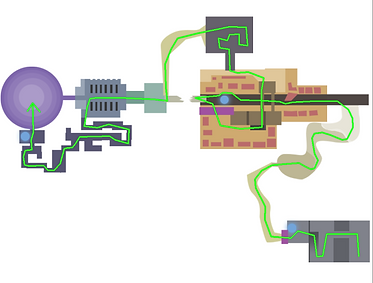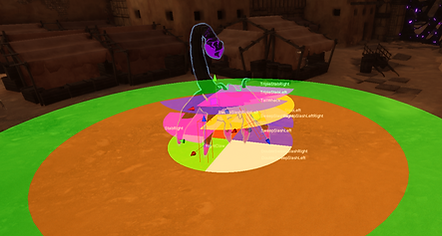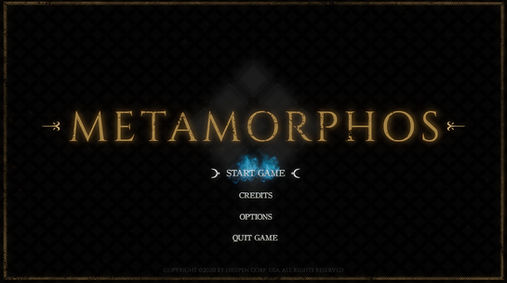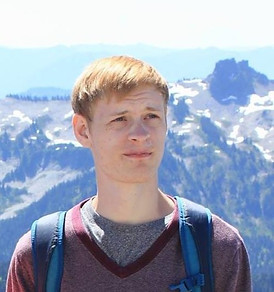On the team, I was responsible for designing and creating an engaging final boss. As such, it should stand as a test to the player's culminated skill and understanding of existing mechanics. The first order of business was to decide on what style of boss we wanted to make.
I started by researching various archetypes of souls-like bosses. Referencing primarily from Dark Souls 1-3. Options broadly included Elusive Ranged types (mages), Hyper Aggressive Melee types, and Multiple Enemy types. After a quick meeting with the creative director we landed on delivering a solid Melee type with a few ranged magical attacks. This was in part because we found intense melee fights to hold a more engaging back and forth, with ranged magical attacks adding some more dynamism. They are a quick and simple solution to a player running away to heal, requiring minimal animation effort for our small and time sensitive team.
I started designing the move set by creating a wish list of moves with variable intentions. A few sweeping slashing and slams to cover close combat with a few variations in power and timing. A fireball and multi-fireball to cover ranged magic attacks. A leaping slam to give them a gap closer. A charged explosion to give the player a reason to back up. This one was important, because the degenerate strategy for many DS bosses is to simply hug their feet and swing wildly. By giving him this explosion, I intended to give them a defense against this strategy.
After the basics were met, I had to get a little more creative. We had corrupted goop featured in the level previously, as a thick substance that would slow you down if you stood in it. Implementing ways for the boss to add this substance throughout the arena would easily create dynamic and engaging moments. A mid ranges corruption toss and a goop explosion were added to his repertoire. At this point I saw the model, and he had a really awesome looking cavity in his chest. I thought, 'it would be dope if he used it to breath fire', and the flamethrower attack was born as a mid range magic option.
All good final bosses have a second phase. As such, I really wanted to deliver on this being a big impact moment within the fight. After the second phase is triggered, I added fire effects to emit from his body as well as his weapon, making it more dangerous. He is also granted access to a few of his more powerful abilities listed above to keep his move set fresh and interesting, while also growing in difficulty. On top of this, his decision making is sped up slightly, making him faster and more aggressive.
Level Design
When starting the level design process, we knew we wanted a 3-Act structure leading into a boss fight. First iterations of the gameplay space did not take this into consideration. I put that 3-Act structure on the backburner while we focused on exploring the tuning of our core mechanics as well as feeling out 3D spaces for fights to take place in. We were also still working on nailing down the narrative which would inform much of our level flow.


After mechanics began to settle down more, I moved onto creating our first level. Set in a temple, the player would work their way towards the center where the boss would await them. An area of focus I had was teasing views of the final boss doorway as you got closer. This helped to give a sense of progression as you worked your way through this enclosed interior space, while also cycling between tight spaces and ones that felt more open due to sightlines.
As we continued development we came back to the 3-Act structure. I had a better sense of how 3D space effected combat and the general feel when moving through it. We also knew we wanted to feature environmental hazards to give more interest and defining features to each of the acts. As such we ended up with a sandy zone, a flooded sewer zone, and a fiery third zone, each building in danger and difficulty. We also made sure to re-implement the teased views of the final boss doorway. This served as a strong vertical slice of our game.


For our final iteration, we had our narrative locked down. This would greatly help inform my final level design. We wanted to deliver the feeling of a larger and expansive world. We expanded the level to include a market town outside the temple and a short winding canyon leading to an ancient tomb. These areas naturally served as our new 3-Act structure with a quick tutorial area. Again, I made sure to implement iconic views of things to come and places you been. I also designed verticality into rooms to capitalize on re-using precious space, while also making them feel dynamic and interesting from various views. This also allowed for more interesting and engaging encounters with ranged enemy types.


AI and Behavior Trees
To help add dynamism and variation to the AI, we opted to utilize behavior trees. This was the first time anyone on the team had used them. A custom tool was created by one of our programmers within Unity for us designers to use.
First implementations resulted in very basic forms of a state machine. 'If this then do this'. Programmers pointed this out and I pursued to change and improve this. I spent a lot of time playing DS games and viewing videos to breakdown the behaviors of enemies and really analyze their decision making, especially for bosses.

With my new found knowledge, I returned to the behavior trees I was in charge of and began to expand them. Adding some more pre-emptive checks for specific moves, more weighted randomness for variation, and most importantly, pre-move and post-move actions. Once an entity decides to use a move they now take proper actions before-hand to help set it up, as well as some actions afterwards to help 'reset' themselves. Another important factor in this was... more randomization. E.G. After a melee attack they might; Wait, Strafe, or very rarely back up a little.

I found that a large amount of randomization helped to create 'unpredictable' (to a certain degree) and dynamic combat, making each encounter feel fresh and new. Though it is importance that a portion of the combat is predictable, as to not create confusion and frustration within the player.
Metamorphos
Metamorphos is a Souls-like Action RPG about a guardian stopping the rampant spread of corruption.
Development
Made by a team of 26 over the course of 16 months
Role: Design Lead, Level Designer
Editor: Unity w/HDRP, Custom Tools
Responsibilities Included;
-
Prototyping player abilities
-
Designing enemy move sets
-
Level design and iteration
-
Boss Design and Behavior Tree
In addition to these tasks, I also frequently collaborated with other designers and team members to develop and improve other various aspects of the game including; Documentation, Encounter Design, VFX, Game Feel, and Narrative.

Reflection
When we started work on Metamorphos we knew we wanted to deliver on two things. Tight souls-like melee combat and the setting of a desert environment where the player is in some shape or form made of sand. Over the course of this project I learned a lot about developing melee combat and the intricacies that follow. Not to mention the complexities of delivering an engaging AI alongside that. The level design has gone through many changes and iterations, both small and large, resulting in a world that feels tight but expansive. While I'm sure we could infinitely spend time improving the game, I'm utterly confounded and floored by the progress I myself and my team have made, not only on the game but as developers ourselves.

Boss Design
Shane Staller
Level & Systems Game Designer

